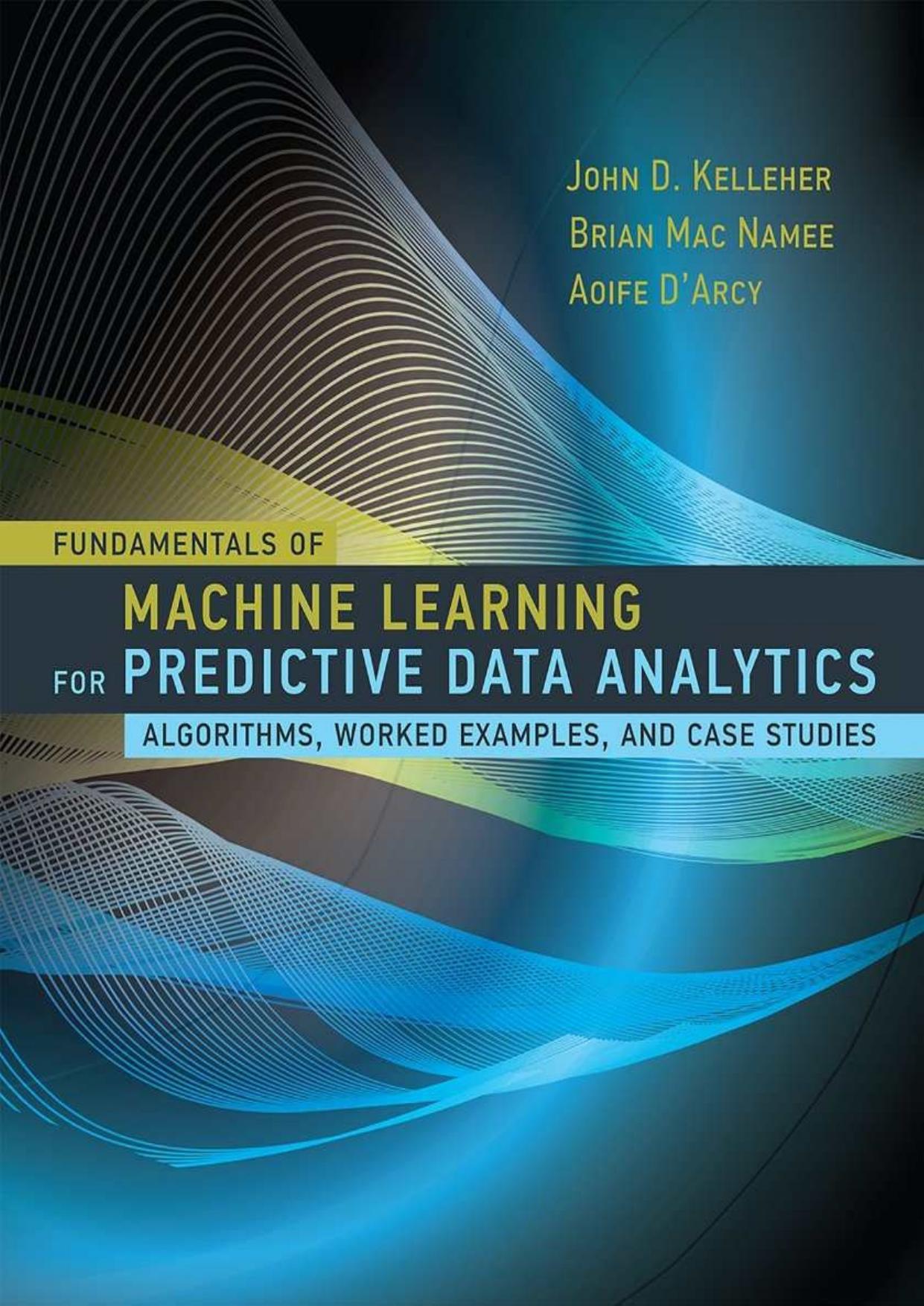Fundamentals of Machine Learning for Predictive Data Analytics: Algorithms, Worked Examples, and Case Studies by John D. Kelleher & Brian Mac Namee & Aoife D'Arcy

Author:John D. Kelleher & Brian Mac Namee & Aoife D'Arcy [Kelleher, John D.]
Language: eng
Format: epub, azw3, pdf
ISBN: 9780262029445
Publisher: The MIT Press
Published: 2015-07-30T21:00:00+00:00
Figure 6.12
Two different Bayesian networks, each defining the same full joint probability distribution.
The chain rule, however, doesn’t specify any constraints on which features in the domain we choose to condition on. We could just as easily have decomposed the probability of the joint event as follows:
Both of these decompositions are valid, and both define different Bayesian networks for the domain. Figure 6.12(a)[301] illustrates the Bayesian network representing the decomposition defined in Equation (6.20)[300], and Figure 6.12(b)[301] illustrates the Bayesian network representing the decompositions defined in Equation (6.21)[301].
We can show that both of the networks in Figure 6.12[301] represent the same joint probability by using each of them to calculate the probability of an arbitrarily chosen joint event from the domain. We should get the same probability for the joint event from both of the networks. For this example, we will calculate the probability of the event ¬a, b, c. Using the Bayesian network in Figure 6.12(a)[301], we would carry out the calculation as follows:
Download
Fundamentals of Machine Learning for Predictive Data Analytics: Algorithms, Worked Examples, and Case Studies by John D. Kelleher & Brian Mac Namee & Aoife D'Arcy.azw3
Fundamentals of Machine Learning for Predictive Data Analytics: Algorithms, Worked Examples, and Case Studies by John D. Kelleher & Brian Mac Namee & Aoife D'Arcy.pdf
This site does not store any files on its server. We only index and link to content provided by other sites. Please contact the content providers to delete copyright contents if any and email us, we'll remove relevant links or contents immediately.
Modelling of Convective Heat and Mass Transfer in Rotating Flows by Igor V. Shevchuk(6349)
Weapons of Math Destruction by Cathy O'Neil(6077)
Factfulness: Ten Reasons We're Wrong About the World – and Why Things Are Better Than You Think by Hans Rosling(4618)
Descartes' Error by Antonio Damasio(3183)
A Mind For Numbers: How to Excel at Math and Science (Even If You Flunked Algebra) by Barbara Oakley(3179)
Factfulness_Ten Reasons We're Wrong About the World_and Why Things Are Better Than You Think by Hans Rosling(3158)
TCP IP by Todd Lammle(3095)
Applied Predictive Modeling by Max Kuhn & Kjell Johnson(2976)
Fooled by Randomness: The Hidden Role of Chance in Life and in the Markets by Nassim Nicholas Taleb(2964)
The Tyranny of Metrics by Jerry Z. Muller(2950)
The Book of Numbers by Peter Bentley(2872)
The Great Unknown by Marcus du Sautoy(2609)
Once Upon an Algorithm by Martin Erwig(2538)
Easy Algebra Step-by-Step by Sandra Luna McCune(2535)
Lady Luck by Kristen Ashley(2493)
Practical Guide To Principal Component Methods in R (Multivariate Analysis Book 2) by Alboukadel Kassambara(2444)
Police Exams Prep 2018-2019 by Kaplan Test Prep(2438)
All Things Reconsidered by Bill Thompson III(2325)
Linear Time-Invariant Systems, Behaviors and Modules by Ulrich Oberst & Martin Scheicher & Ingrid Scheicher(2301)
